Cycling / Public Spaces / Study Tour
Discover the History Behind the First Red Cycle Path During This Unique Study Tour
This article from Strategic Advisor Angela van der Kloof discusses the history behind the first red cycle path in Tilburg and highlights the unique study tour experience through this lesser-known Dutch cycling city.
With winter well underway and the days getting longer, we know spring is approaching. We want to start thinking and planning for the study tour season at this time of the year. Over the years, we have welcomed individuals and groups from around the world. We walked, hopped on our bikes, and took people along on public transport. Participants were taken on explorations to various cities, towns, and regions, showing them examples of what is possible in designing and planning for streets and neighborhoods. We also showed examples of promotion and education for active travel and discussed matters of equality, equity, and mitigating mobility poverty.
One of the lesser-known field trips we offer is in Tilburg, the 7th largest city in the Netherlands with 230.000 inhabitants. When joining us on a study tour in Tilburg, you will experience riding on the first red cycle path in the Netherlands. At the time, it was about 10 kilometers long, and Minister Westerterp opened this demonstration route on 21st April 1977.
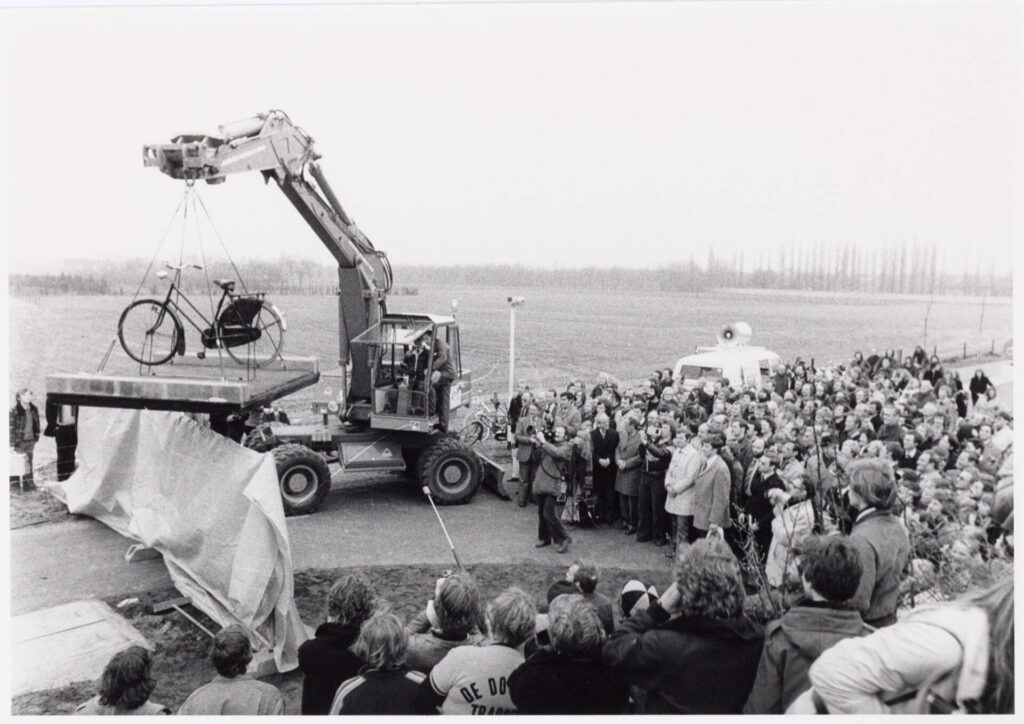
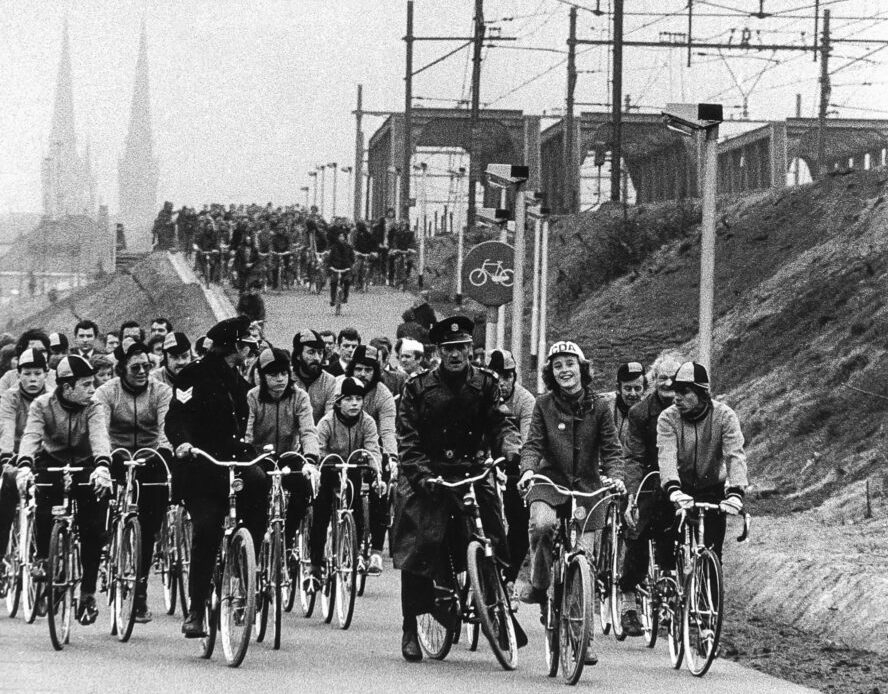
In this study tour, you will learn how this iconic cycle path has changed over the years, how different people in the city had different views on the use of space, and how the route continues to be adapted to changes in the city. Some sections of the cycle path have remained almost identical over the decades. In other places, changes have been made. Take Korte Heuvel as an example: a cozy street with bars, restaurants, and a row of terraces.
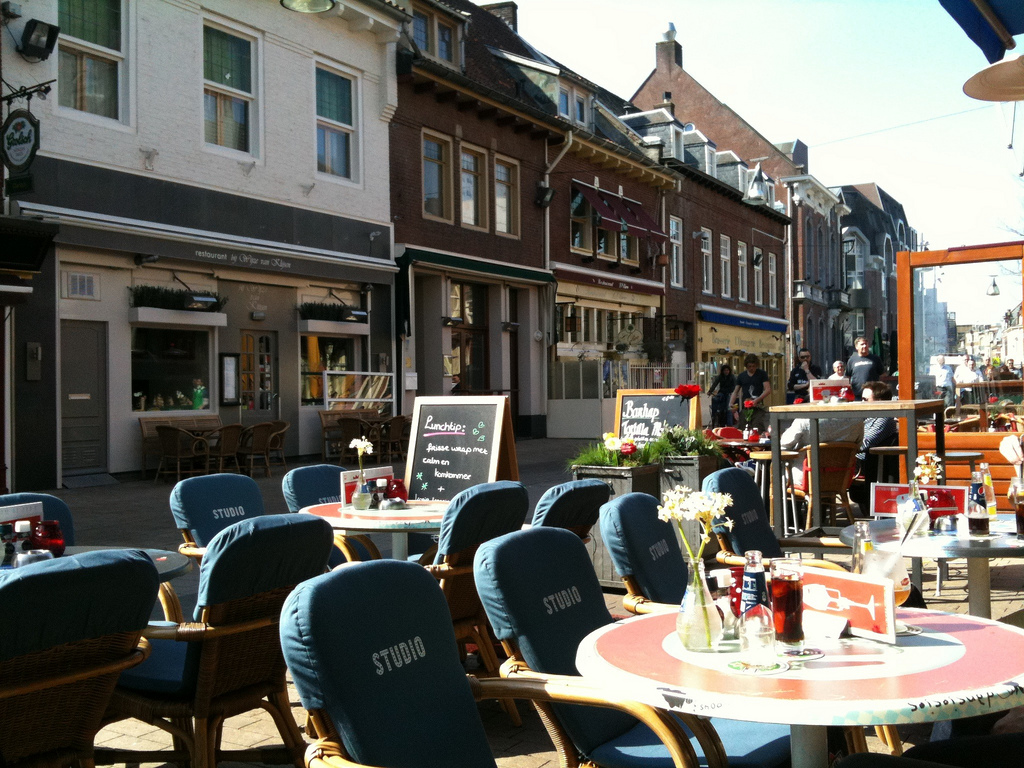
If you’re there now, you can’t imagine that until 30 years ago it was normal for cars to drive through this street.
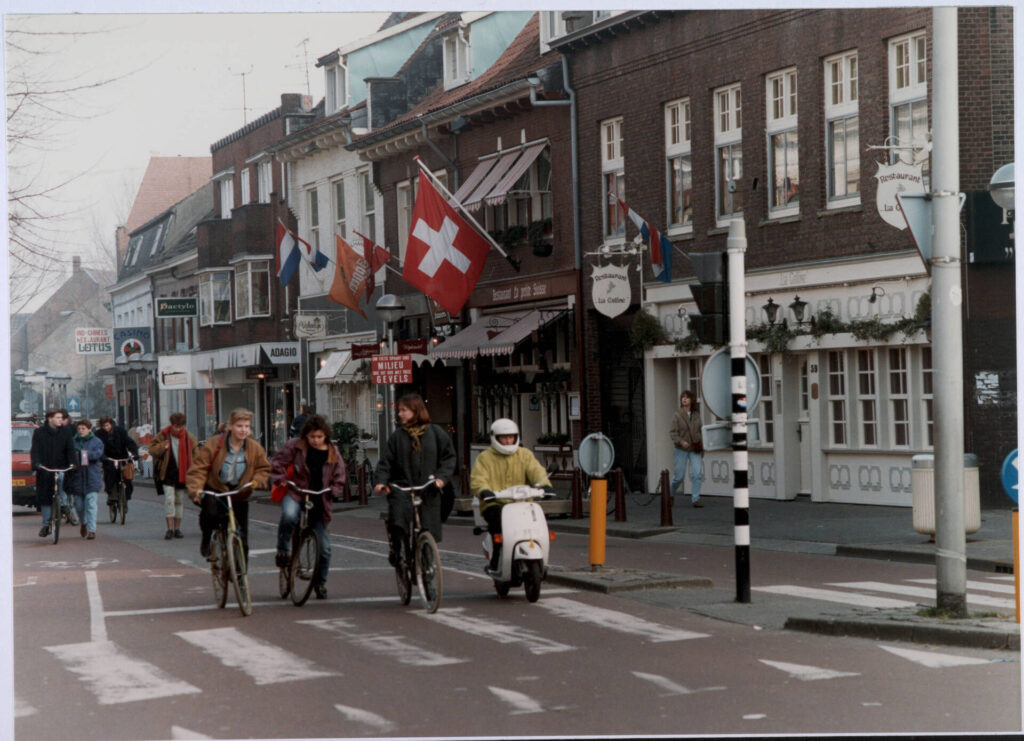
On busy days, you can’t even cycle here properly, imagine cars going through this street! In other places, from the cyclist’s point of view, you don’t quite understand why choices that have made cycling less attractive have been made. We’ll invite you to explore different perspectives and interests during the tour.
The story of the red cycle path and how it triggered the development of Tilburg’s star bike network is a story Angela van der Kloof also likes to share in talks and cycling planning workshops. A few years ago, she spoke about it in London, and it turned out that one of the participants had been active in the London Cycling Campaign (LCC) in the 1980s. He had been on a trip to the Netherlands with a group of 22 fellow advocates in 1984. He shared a copy of the LCC Newsletter article about the trip. The film crew spent a whole morning on the entire Tilburg route “with camera operator Susi cycling along one-handed.”
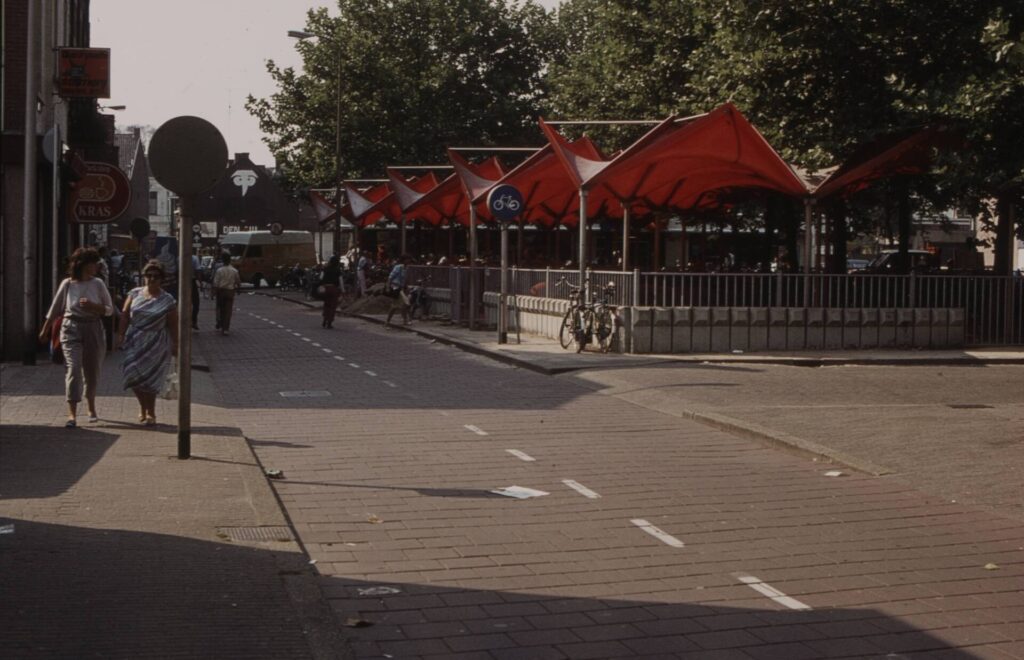
It may be interesting to realize that professionals and cycling advocates took study tours to Dutch cities focused on cycling planning from the 1970s onwards. The demand was such that in 1997, the Dutch Cyclists’ Union Fietsersbond published the booklet “Cycling in Dutch Cities – Ten Excursions in the Netherlands.” Tilburg is one of the ten cities described in this booklet, and the red cycle path is the first feature discussed and explained.
Another topic is cycle parking at stations and in the city center. In the 1990s, Tilburg was still ahead of the game when they opened the first guarded underground cycle parking in a city center in the Netherlands. Nowadays, the city has six underground or sheltered cycle parking facilities in the city center and two outside the city center. The number of guarded cycle parking facilities at the station increased, while cycle parking in the open air around the station is now prohibited.
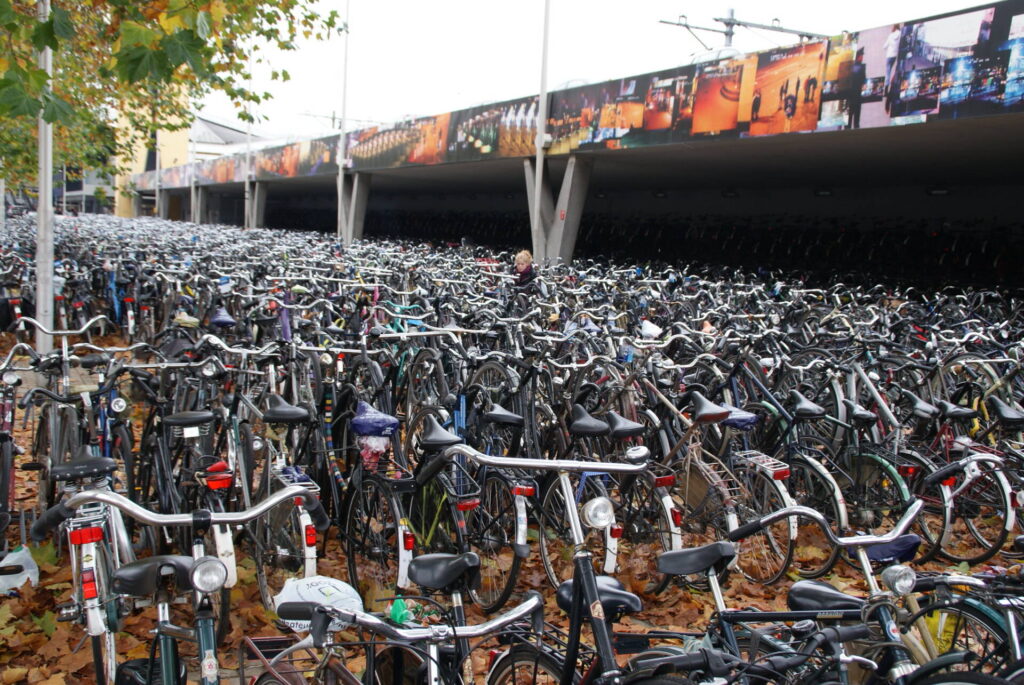
Are you curious about the connection between cycling, history, urban development, and politics?
Join our study tours for an eye-opening experience!
We offer customized tours in cities like Amsterdam, Tilburg, Utrecht, Rotterdam, The Hague, and more, tailored to your interests and needs. Whether you’re passionate about sustainable mobility or eager to explore best practices firsthand, we’ll craft an insightful and fun experience.
Reach out to schedule your tour before spots fill up! We’d love to hear from you and help create the perfect experience!
Discover your unique opportunity to dive into cycling and city planning!


 ">
">